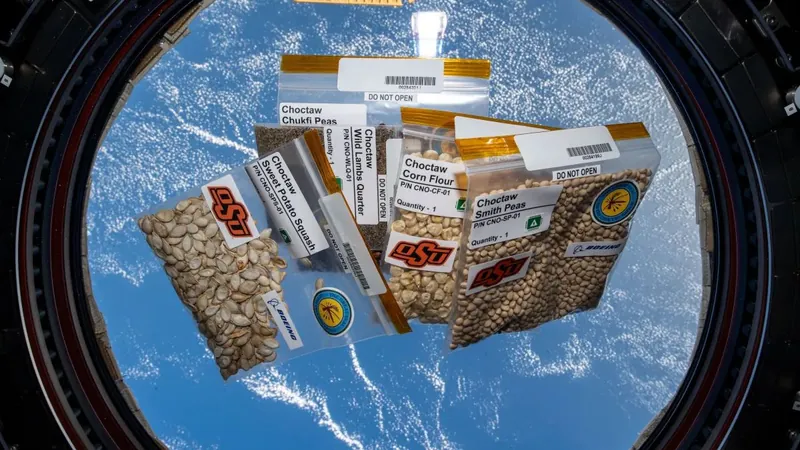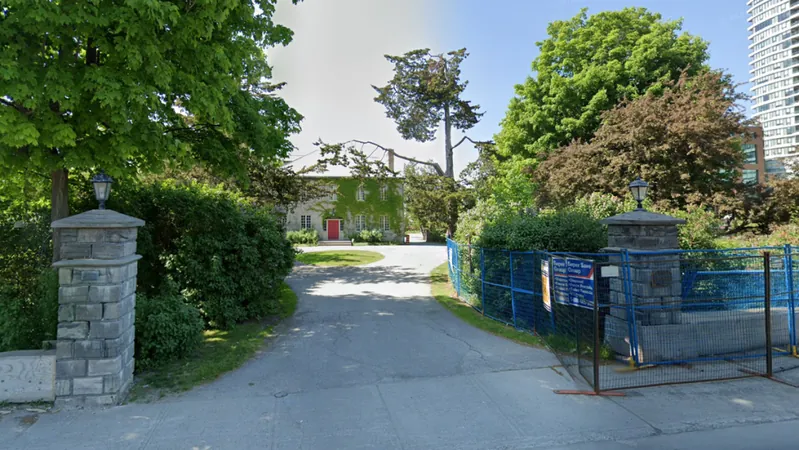
Choctaw Nation Seeds Return from Space: A Groundbreaking STEM Experiment for Native Youth
2024-11-17
Author: Amelia
Introduction
In an exciting blend of culture, science, and technology, seeds flown to space last year are set to make their terrestrial debut this spring. This unique experiment involves five varieties of heirloom seeds from the Choctaw Nation of Oklahoma. The seeds—Isito (Choctaw Sweet Potato Squash), Tobi (Smith Peas), Tanchi Tohbi (Flour Corn), Tvnishi (Lambsquarter), and Chukfi Peas—embarked on their cosmic journey to the International Space Station (ISS) in November 2023.
The Space Mission
Weighing in at just over a pound (approximately 500 grams), these seeds were exposed to the harsh conditions of microgravity and space radiation for more than five months before returning to Earth in April 2024. This mission, known as the Choctaw Heirloom Seeds investigation, is more than just a scientific endeavor; it represents a significant step towards empowering Native American youth and encouraging their participation in STEM (science, technology, engineering, and math) fields.
Involvement of Native Youth
Students at the Jones Academy, a boarding school dedicated to Native American education in Oklahoma, will play a pivotal role in this experiment. They will plant both the space-flown seeds and a control group of identical seeds that remained on Earth, allowing for direct comparison of their growth. The students will engage in hands-on scientific methods by predicting the growth of each group and conducting observations to test their hypotheses.
Cultural Significance and Future Implications
NASA emphasizes that this initiative not only highlights the cultural heritage of Native Americans but also aims to inspire a new generation of scientists and engineers from communities that have historically been underrepresented in these fields. The project's intent is clear: to elevate Native voices and encourage youth involvement in the rapidly advancing world of STEM.
Broader Themes and Insights
In a world where technology and agriculture intersect, such pioneering projects offer invaluable insights. They also resonate with broader themes, such as climate resilience in agriculture, with other recent scientific endeavors exploring the adaptation of various plant species in extreme environments.
Conclusion
As the Choctaw seeds prepare for their new journey on Earth, all eyes will be on the garden at the Jones Academy. This is not just a scientific experiment; it is a cultural renewal, a step towards representation, and a beacon for aspiring Native American scholars who might one day lead the charge in science and technology. The impact of these seeds could go far beyond the garden—a true testament to the power of education and innovation in shaping the future.









 Brasil (PT)
Brasil (PT)
 Canada (EN)
Canada (EN)
 Chile (ES)
Chile (ES)
 España (ES)
España (ES)
 France (FR)
France (FR)
 Hong Kong (EN)
Hong Kong (EN)
 Italia (IT)
Italia (IT)
 日本 (JA)
日本 (JA)
 Magyarország (HU)
Magyarország (HU)
 Norge (NO)
Norge (NO)
 Polska (PL)
Polska (PL)
 Schweiz (DE)
Schweiz (DE)
 Singapore (EN)
Singapore (EN)
 Sverige (SV)
Sverige (SV)
 Suomi (FI)
Suomi (FI)
 Türkiye (TR)
Türkiye (TR)